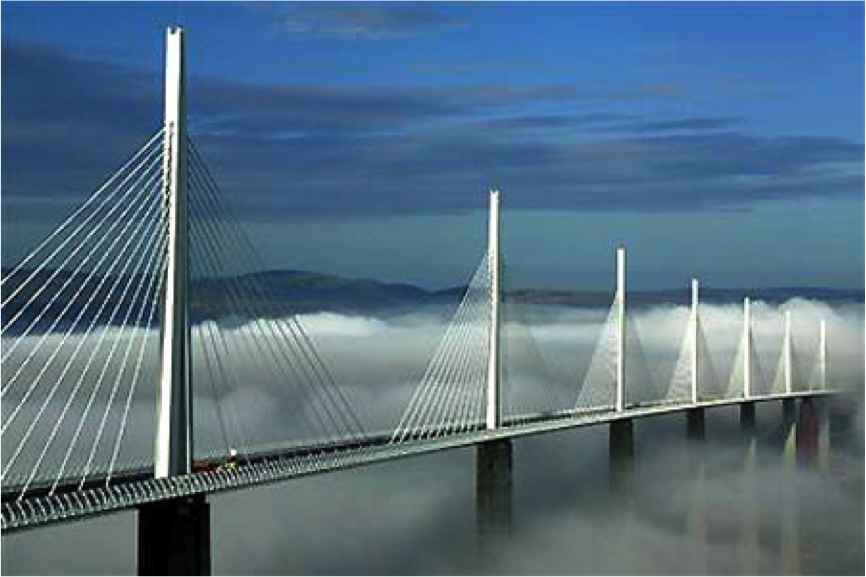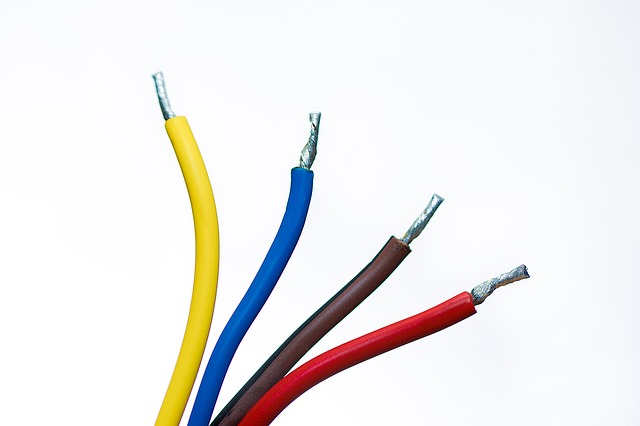Cable

|
| The weight of this cable car is suopported by a wire cable. |
Contents |
[edit] Definition
A cable is a line made of rope, chain or wire that has different functions according to the application it is used for. It can either tie together two points or simply connect them, as in electricity conveyance or data transmission, and can be loadbearing or non-loadbearing. Cables can be vertical, diagonal, horizontal, or may follow a characterisitc catenary shape that curves with gravity to a low point in the middle of the cable.
[edit] Types of cable
[edit] Mechanical
Mechanical cables usually transfer a load between two points, so that an action at on one point causes a corresponding mechanical action at the other. For example:
- In an old-fashioned bell-pull, the bell rings when the other end of a cable/wire is pulled (usually at the front door).
- The steel cables on a suspension bridge transfer the weight of the road/rail deck and passing traffic to the supporting pylons. The cable usually comprises many strands of steel wire that are intertwined for greater strength. Cables can also support lift cars, cable cars, ski lifts etc.

|
| Suspension cables seen here on the Millau Viaduct, France |
[edit] Transmission
- Transmission/power cables convey current (electricity cables) and usually comprise one or more wires (sometimes intertwined) that are sheathed with PVC or other insulating material. Fibre optic cables also fall into this category.
[edit] Communication cables
[edit] Related articles on Designing Buildings
- Building fabric.
- Cable carrier.
- Careful planning required during cable management materials shortages.
- Curtain wall systems.
- Fabric structures.
- Frei Otto.
- Hyperbolic paraboloid.
- Shortages of cable management products.
- Structural glass assembly.
- Tensile structures.
- Tension cable and rod connectors.
- Wire rope suspension systems.
Featured articles and news
Building Safety Regulator reforms
New roles, new staff and a new fast track service pave the way for a single construction regulator.
Cooling centres and cool spaces
Managing extreme heat in cities by directing the public to places for heat stress relief and water sources.
Winter gardens: A brief history and warm variations
Extending the season with glass in different forms and terms.
Restoring Great Yarmouth's Winter Gardens
Transforming one of the least sustainable constructions imaginable.
Construction Skills Mission Board launch sector drive
Newly formed government and industry collaboration set strategy for recruiting an additional 100,000 construction workers a year.
New Architects Code comes into effect in September 2025
ARB Architects Code of Conduct and Practice available with ongoing consultation regarding guidance.
Welsh Skills Body (Medr) launches ambitious plan
The new skills body brings together funding and regulation of tertiary education and research for the devolved nation.
Paul Gandy FCIOB announced as next CIOB President
Former Tilbury Douglas CEO takes helm.
UK Infrastructure: A 10 Year Strategy. In brief with reactions
With the National Infrastructure and Service Transformation Authority (NISTA).
Ebenezer Howard: inventor of the garden city. Book review.
The Grenfell Tower fire, eight years on
A time to pause and reflect as Dubai tower block fire reported just before anniversary.
Airtightness Topic Guide BSRIA TG 27/2025
Explaining the basics of airtightness, what it is, why it's important, when it's required and how it's carried out.
Construction contract awards hit lowest point of 2025
Plummeting for second consecutive month, intensifying concerns for housing and infrastructure goals.
Understanding Mental Health in the Built Environment 2025
Examining the state of mental health in construction, shedding light on levels of stress, anxiety and depression.
The benefits of engaging with insulation manufacturers
When considering ground floor constructions.
Lighting Industry endorses Blueprint for Electrification
The Lighting Industry Association fully supports the ECA Blueprint as a timely, urgent call to action.























